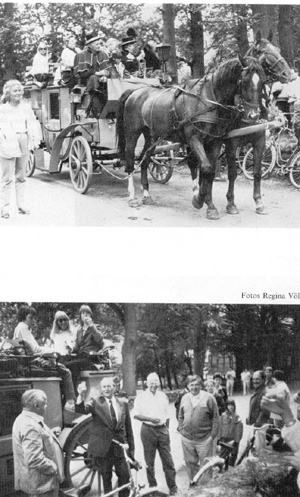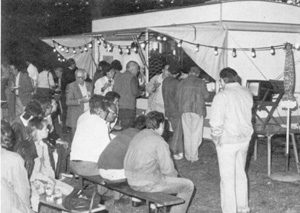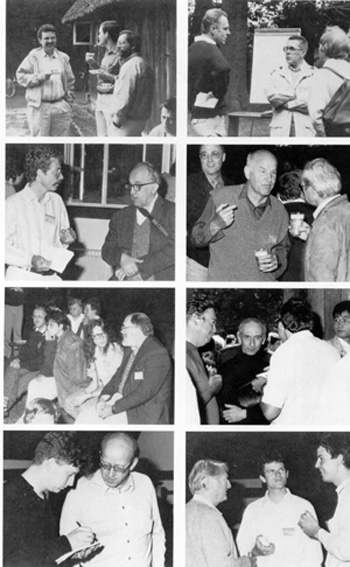|
|
|
You see things, and say why? But I dream things that never were, and
I say, why not ? Far ahead of this time, June 1st, 1909, Alexander Maximov communicated in a lecture, given in the Charite in Berlin, the fundamental knowledge, that there exists a lymphoid hemopoetic stem cell. Alexander Friedenstein explained that during the following years, Maximov also showed that the idea of interaction between hcmopoetic cells and their stroma to be onc of the most significant experiences. Monoclonal antibodies, rccombinant DNA tcchnics and the improvement of tissue culture models are the major developments to improve our possibilities to clarify growth .md differentiation functions of hemopoetic cells. During the last two decades it was shown that soluble products, released from T cells, were not only involved in inducing B cells to produce specific immunoglobulin secretion after antigen stimulation. Furthermore, Iymphokines together with other cytokines regulate the growth and differentiation of hemopoetic cells. As I have learned from Dick Gershon, our knowledge of the cellular basis for immunoregulation has come a long way since 450 B.C. Thucydides comments on the possible role of immune response in controlling the Black Death. Dick Gershon speculated that no scientific interest for these interesting observations was put forth at that time. Perhaps the problems, the Athcnians were having with thc Spartans, converted money from basis research into the military budget. He also found documentations in western literature that scientific progress not only in our time could be made by industry rather than by academicians. In Turkey, parents pretreated their girls with scabrous material obtained from subjccts suffering from active smallpox to protect their daughters' bcauty against pock marks. But thc first known inoculations have been invented in China during the Sung Age 1000 after Christ and here we have to deal with a different story from what Richard K. Gershon has learned in Turkey. During the government of Jun Tsung (1023 -1063) a Tibetan monk from the Omei mountains at the Tibetan border inoculated the son ofan old Minister, who hali lost already his other children. For this inoculation he used scabrous material obtained from cases with active smallpox. The material he kcpt in summer for 15 to 20 days and in winter for 40-50 days to get attenuated materialj For this successful treatment, the Minister wantcd to give to the monk a generous gift. The monk, however, refuscd any gift and instead he requested the Minister to serve his people faithfully. Thcn the monk returned to his mountains and continued to be a hermit there as he was before. The inoculation, however, became quickly more and more popular in China. Out of thc judging most probably, Turkish mothers havc learned to protect the beauty of their daughtersj Lady Wortly Montagu (1690-1762) got to know 1716 in Constantinople this treatment against smallpox, which was practised there already quite frequentlyj On March 18,1718 she successfully inoculated her own son against strong opposition in England. 
She could publish her results only in a newspaper, the flying post. Later on, after Jenner and others, vaccination became a perfectly recommended protection against infection. Av Mitchison made a summary of the modern trends in this field as discussed during the 8th Wilsede Meeting. I have to thank him for this and all the praticipants who made the 8th Wilsede Meeting again a high light. Now I want to conclude my personal preface with a statement "I hate chaos" but especially in Wilsede I learned, "chaos loves me". Susumo Ohno taught me that there has been increasing realisation that there is order in chaos as well. So far, I don't understand the universal metric properties of non-linear transformations of Feigenbaum (1985 J. Stat. Physics 21: 669- 706) and I don't succeed in understanding the secret laws which organise the chaos, like the weather, with the help of the fractal geometry of Mandelbrot. However, I have heard about a some hundred years old statement of Novalis about the sensible chaos. We will prove in the 9th Wilsede Meeting 1990 whether there are comprehensivc realities between chaos and biological aspects of human life and look on Egon Degens "Cosmic Composed" following his "Blueprints of Early Life". 


Fotos Regina Völz |